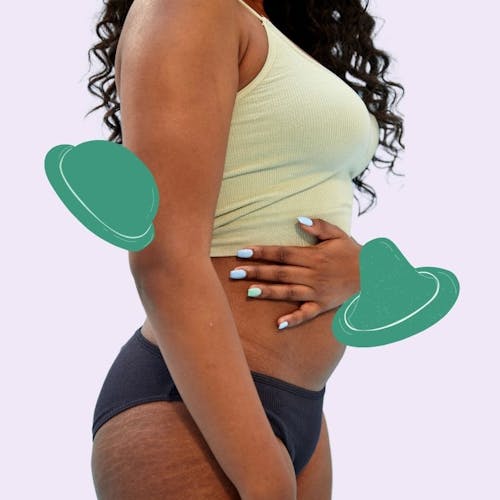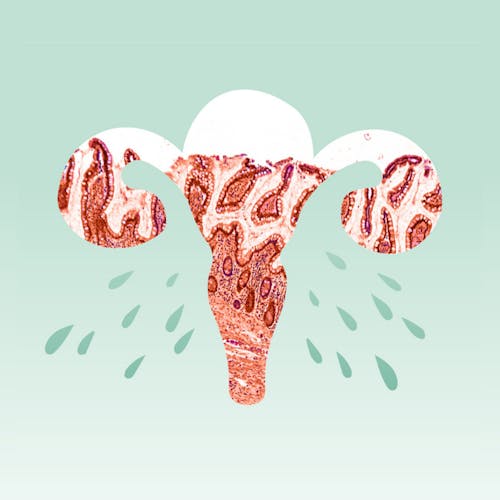This website uses cookies to enhance the user experience. By using Yoppie you are agreeing to our use of cookies.
IUD SOS: Why Isn't Women's Pain Taken Seriously?
Written by Yoppie
07 Jul 2021
How common are IUDs, and how painful is insertion?
Why is it painful for some but not others?
Why aren’t we offered more pain relief?
Why isn’t the pain taken seriously?
What to do if you’re in pain
Will things change?
Have you had an IUD (intrauterine device) fitted? How did you find the experience? If you experienced pain, you wouldn’t be the first. In recent months, there have been long overdue conversations in the media about women’s pain, with IUD fittings at the heart of the matter.
Doctors and those in the medical profession are incredible at what they do, but the fact remains; only you know your own pain threshold and levels of discomfort, and if many of those getting IUDs say the pain is intense, isn’t it about time we listened?
How common are IUDs, and how painful is insertion?
The UN states around 159 million women have had an IUD fitted (as of 2019), and it remains a convenient and effective method of birth control for those who want something long-term, who struggle to take the pill every day, or who need non-hormonal options.
For some, the insertion procedure is perhaps a little uncomfortable, but nothing to write home about. In other cases, it can be intensely painful. With more voices weighing in on what an IUD fitting is like, BBC presenter Naga Munchetty called it “one of the most traumatic physical experiences I’ve had”. And it makes sense, since your cervix is designed to have a baby come out, not to have a device go in. It’s no wonder our bodies recoil in pain.
Why is it painful for some but not others?
Studies have found women who have never given birth vaginally tend to rate their pain level higher (6 out of 10) than those who have (3 out of 10). If your procedure goes smoothly, you could be in and out in 5 minutes feeling barely a twinge. This is the case for many people, and we certainly don’t want to put anyone off of this effective birth control option. That said, pain management for the procedure is typically offered under the assumption that everyone will have a largely pain-free experience. Unfortunately this is not the case.
Why aren’t we offered more pain relief?
It can feel a little like gaslighting when - for example - the NHS website claims “It can be uncomfortable when the IUD is put in, but you can take painkillers after, if you need to.” Anyone who’s suffered from intense period cramps will know that sometimes popping a couple of paracetamol won’t always cut the mustard.
You may experience a difficult insertion, multiple attempts at insertion, cervix spasms, or pain lasting several days after the procedure. In any case, this should not only be made aware to all who opt for an IUD, but they should also be offered adequate pain relief.
A local anaesthetic injection around the cervix can reduce some pain and discomfort when having an IUD fitted, but it’s not typically offered. While more research is needed, studies suggest this could be helpful for those who have never given birth vaginally.
Why isn’t the pain taken seriously?
Women’s pain isn’t always taken seriously for IUD fittings, and for issues such as endometriosis, which research shows takes a staggering 7.5 years to diagnose, on average.
As author Gabrielle Jackson writes in The Guardian, “Women weren’t included in clinical trials until the 1990s. While we make up 70% of chronic pain patients, 80% of pain medication has been tested only on men.”
Historically most medical research has been done on males, so there’s room to discover more about women’s bodies, health conditions, and how to treat the ailments many of us live with every day. This has been found in studies on gender stereotypes and pain, where men’s complaints are usually taken more seriously.
Astoundingly, the Harvard blog states that gender biases in medicine can have serious consequences; a 2000 study found women are 7x more likely than men to be misdiagnosed and discharged during a heart attack. While research on disparities is ongoing, it certainly raises questions.
What to do if you’re in pain
If you have suffered a horrendous IUD insertion and were told it’s normal, or you live with chronic pain without diagnosis, know that you’re not being “over dramatic” or “emotional”. Communication is often key when you want to voice your concerns. Speak to your GP or nurse about the pain, its intensity, and how it affects your life.
Getting an IUD and worried about pain? Don’t be afraid or embarrassed to ask questions, voice concerns, or ask to stop at any time. There are often pain relief options available that aren’t immediately offered, so ask the question to prompt a discussion. Doctors and nurses want to help you have a pain-free experience, so give them a chance to do this by effectively communicating your pain.
Will things change?
A recent uptick in discussion around women’s pain in the media and medical community means we are beginning to take notice of this issue and address it. After her own distressing experience, Lucy Cohen - a small business owner in Wales - began a petition to address women’s pain during IUD procedures. She has had around 1500 people share their stories, and found that on a pain scale of 0-10, 43% of respondents rated their pain as a 7 or higher, describing it as “almost unbearable”, “excruciating”, and a few even likening the pain to childbirth or broken bones.
The Change.org petition asks for better expectation management of IUD insertion and removal procedures, and more pain relief options as standard, such as gas and air, sedation and muscle relaxants. You can read more about Lucy’s work and sign the petition here.
Have you experienced a painful IUD procedure? We’d love to hear about your experience, good or bad. Speak about it in our private Facebook group or drop us a note on Insta @itsyoppie. Don't forget that our personalised period box can get organic tampons, PMS supplements and more delivered easily and regularly through your letterbox, so that's one load off your mind about everything that normally goes on down there.
Section jump
Back to top
Subscribe To Our Newsletter
YOPPIE





© 2026 Yoppie is a registered trademark of Phlo Technologies Ltd.
Yoppie's supplements are not a substitute for a varied diet and healthy lifestyle and are not intended to diagnose, treat, or cure any disease. If you are pregnant, breastfeeding, have a medical condition or are under medical supervision, please consult with your doctor before taking any of our products.






